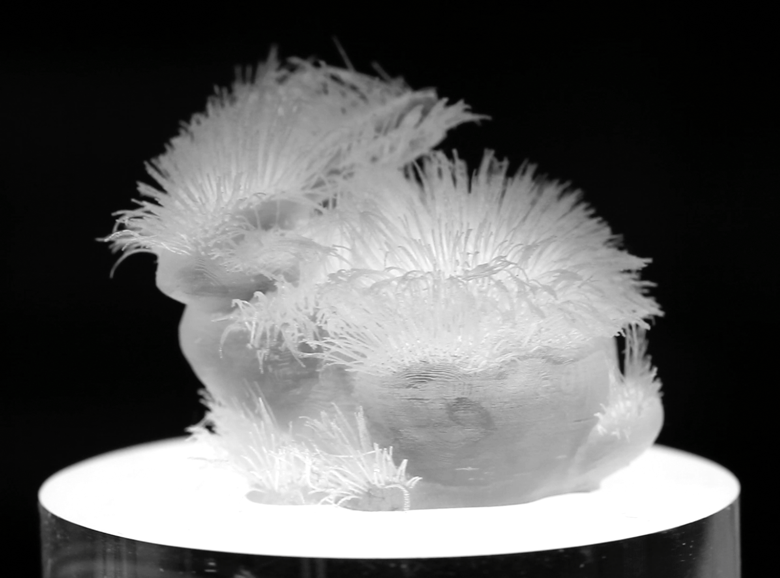Recommended

PhD student Jifei Ou SM ’14 is already familiar with the ways 3-D printing can bring algorithms and design together to make new models, but his latest research pushes the confines of 3-D printing by producing hair. Yes, thousands of microscopic strands of hair can be printed to create a new material he calls “cillia.” This hair-like substance not only expands how 3-D printing can create new materials, but it advances how interactive materials can increase the efficiency and responsiveness of inanimate objects.
One of the most interesting properties of cilllia is the way it can respond to human touch, vibrations, and sensors to create movement and interaction. “Hair has more functionality than we thought,” says Ou. Because 3-D printing allows for control of the design, you can design each hair fiber to encourage different outcomes and levels of interactivity. “The angle and dimension of each hair can create mechanical adhesions. You can design a certain shape of hair to enable motion,” he says.
In experimenting with the weight and frequency of vibrations, this printed hair material can act as a conveyor, moving items across a landscape. For example, in a factory the varying sensors and properties of hair could be used to separate tools from each other automatically. “This material can harness vibrations found in everyday life and use it to create a desired motion,” Ou says.
The creation of cilllia is just one part of Ou’s research. He is developing programming for 3-D printing that can use complex algorithms to create complicated structures. The typical CAD software used for 3-D printing cannot produce intricate structures like hair, which is smaller than 100 microns. Part of Ou’s research consisted of developing a software that allows you to generate the specific properties of this artificial hair while customizing it to interact.
The development of this new hair material has opened up opportunities to print unique materials with varying properties. Ou says that cellular structure could be the next substance created digitally and printed based on the cilllia model. Ou’s passion for programming responsive, adaptive, and tunable materials comes from his observations of nature and his sensitivity to shapes. Ou’s work has taken materials developed by 3-D printing a step beyond mere dimensions. “It’s like animating materials,” he says.
Watch his designs in motion here:
[embed]https://vimeo.com/166604922[/embed]








